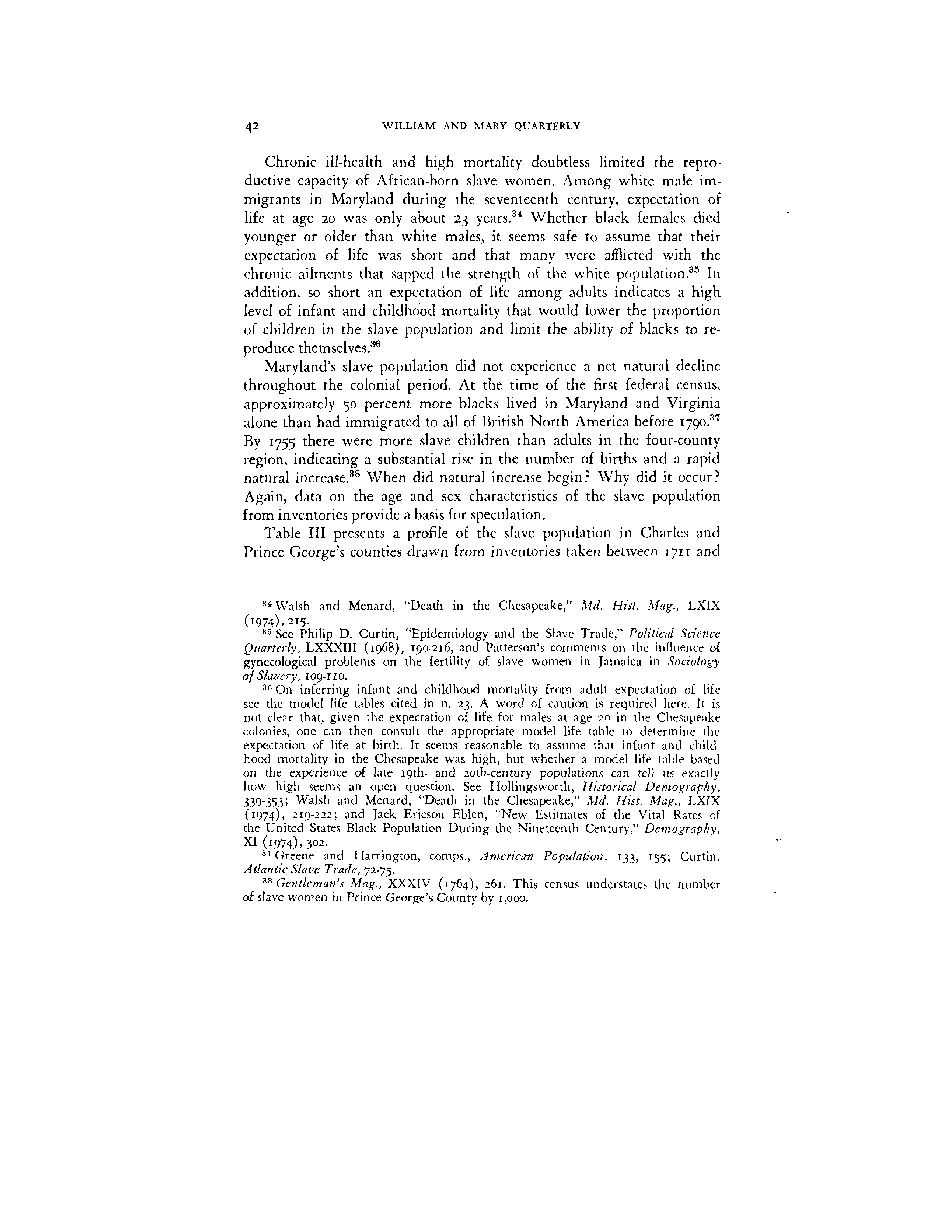|
42 WILLIAM AND MARY QUARTERLY
Chronic ill-health and high mortality doubtless limited the repro-
ductive capacity of African-born slave women. Among white male im-
migrants in Maryland during the seventeenth century, expectation of
life at age 20 was only about 23 years.34 Whether black females died
younger or older than white males, it seems safe to assume that their
expectation of life was short and that many were afflicted with the
chronic ailments that sapped the strength of the white population.85 In
addition, so short an expectation of life among adults indicates a high
level of infant and childhood mortality that would lower the proportion
of children in the slave population and limit the ability of blacks to re-
produce themselves.36
Maryland's slave population did not experience a net natural decline
throughout the colonial period. At the time of the first federal census,
approximately 50 percent more blacks lived in Maryland and Virginia
alone than had immigrated to all of British North America before i79O.87
By 1755 there were more slave children than adults in the four-county
region, indicating a substantial rise in the number of births and a rapid
natural increase.38 When did natural increase begin? Why did it occur?
Again, data on the age and sex characteristics of the slave population
from inventories provide a basis for speculation.
Table III presents a profile of the slave population in Charles and
Prince George's counties drawn from inventories taken between 1711 and
"Walsh and Menard, "Death in the Chesapeake," Md. Hist. Mag., LXIX
(1974), 215.
35 See Philip D. Curtin, "Epidemiology and the Slave Trade," Political Science
Quarterly, LXXXIII (1968), 190-216, and Patterson's comments on the influence of
gynecological problems on the fertility of slave women in Jamaica in Sociology
of Slavery, 109-110.
36 On inferring infant and childhood mortality from adult expectation of life
see the model life tables cited in n. 23. A word of caution is required here. It is
not clear that, given the expectation of life for males at age 20 in the Chesapeake
colonies, one can then consult the appropriate model life table to determine the
expectation of life at birth. It seems reasonable to assume that infant and child-
hood mortality in the Chesapeake was high, but whether a model life table based
on the experience of late I9th- and 20th-century populations can tell us exactly
how high seems an open question. See Hollingsworth, Historical Demography,
339-353; Walsh and Menard, "Death in the Chesapeake," Md. Hist. Mag., LXIX
(1974), 219-222; and Jack Ericson Eblen, "New Estimates of the Vital Rates of
the United States Black Population During the Nineteenth Century," Demography,
XI (1974), 302.
37 Greene and Harrington, comps., American Population, 133, 155; Curtin,
Atlantic Slave Trade, 72-75.
^Gentleman's Mag., XXXIV (1764), 261. This census understates the number
of slave women in Prince George's County by 1,000.
�
|

